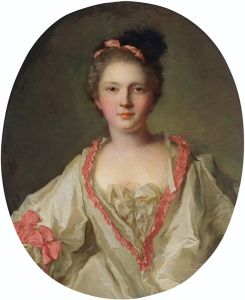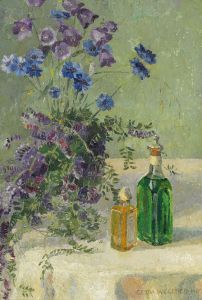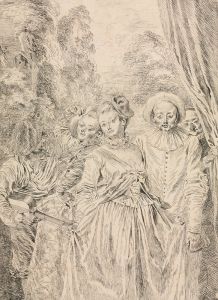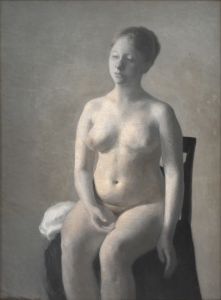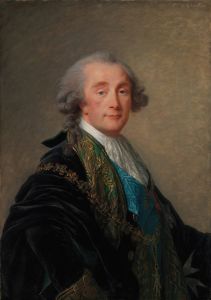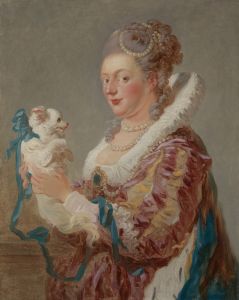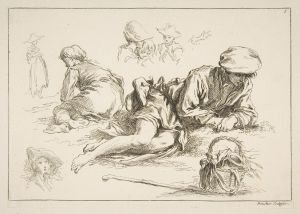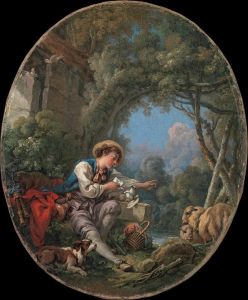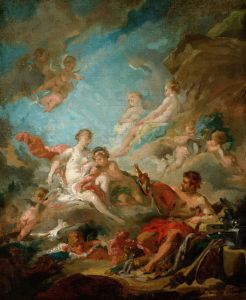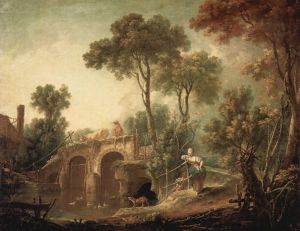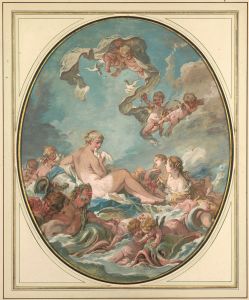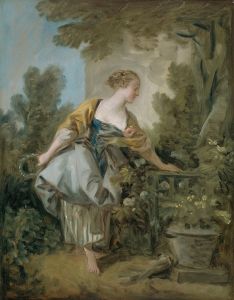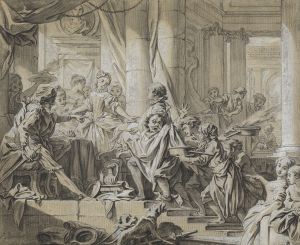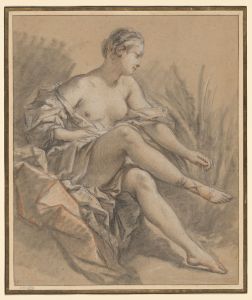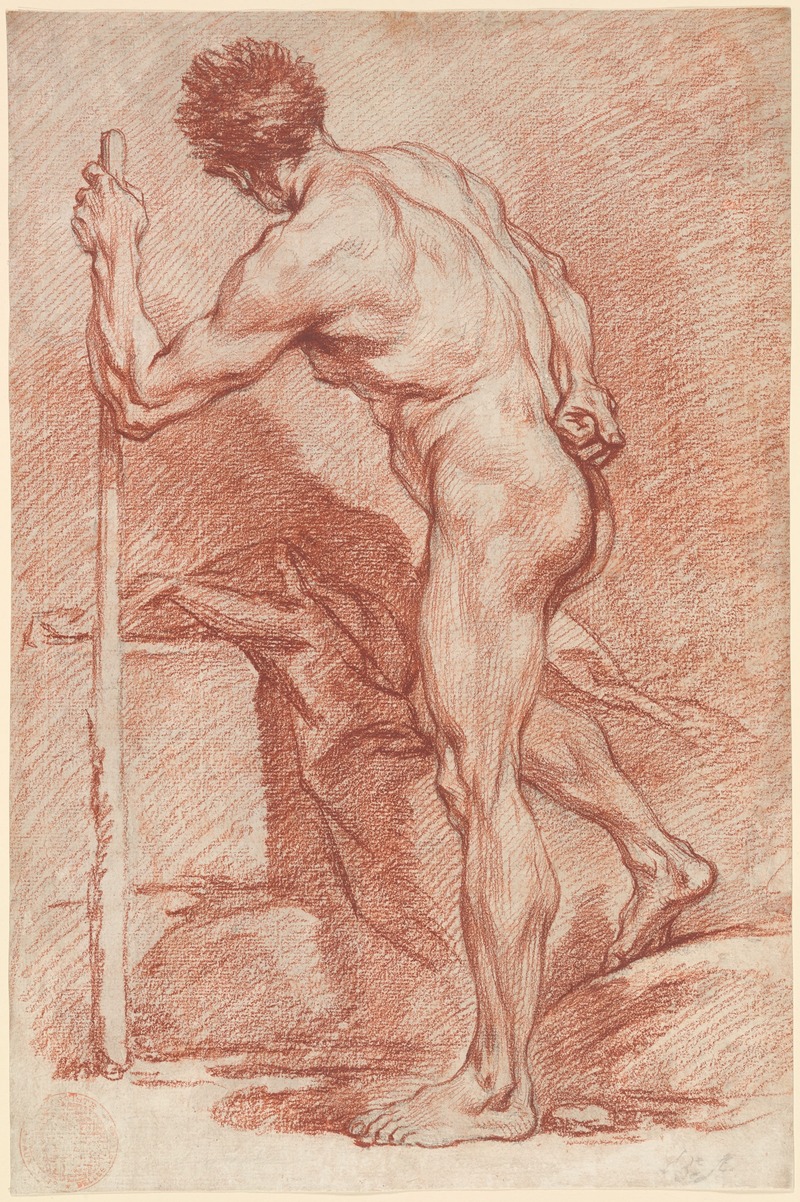
Male Nude
A hand-painted replica of François Boucher’s masterpiece Male Nude, meticulously crafted by professional artists to capture the true essence of the original. Each piece is created with museum-quality canvas and rare mineral pigments, carefully painted by experienced artists with delicate brushstrokes and rich, layered colors to perfectly recreate the texture of the original artwork. Unlike machine-printed reproductions, this hand-painted version brings the painting to life, infused with the artist’s emotions and skill in every stroke. Whether for personal collection or home decoration, it instantly elevates the artistic atmosphere of any space.
François Boucher (1703-1770) was a prominent French painter known for his Rococo style, which emphasized lightness, elegance, and an exuberant use of color. Among his extensive body of work, "Male Nude" is a notable piece that showcases his skill in depicting the human form with a sense of grace and fluidity.
"Male Nude" is an oil painting that exemplifies Boucher's mastery of anatomy and his ability to render the male body with a delicate yet dynamic touch. The painting features a young male figure, posed in a relaxed, almost languid manner. The subject's musculature is finely detailed, highlighting Boucher's understanding of the human physique. The use of light and shadow in the painting accentuates the contours of the body, giving it a three-dimensional quality that is both lifelike and idealized.
Boucher's "Male Nude" reflects the Rococo aesthetic, characterized by its playful and sensuous qualities. The painting's background is typically soft and unobtrusive, allowing the viewer's focus to remain on the central figure. The choice of a male nude subject was somewhat unconventional for the time, as female nudes were more commonly depicted in Rococo art. This choice underscores Boucher's versatility and willingness to explore different themes within his work.
The painting is believed to have been created as a study for a larger composition or as an academic exercise to demonstrate Boucher's proficiency in figure drawing. During the 18th century, such studies were an essential part of an artist's training and were often used to refine techniques and experiment with different poses and lighting conditions. Boucher's attention to detail and his ability to capture the subtleties of the human form are evident in this work, making it a valuable example of his artistic process.
François Boucher was a favorite of Madame de Pompadour, the chief mistress of King Louis XV, and his work was highly sought after by the French court. His paintings often featured mythological and pastoral scenes, imbued with a sense of whimsy and eroticism. "Male Nude" fits within this broader context of Boucher's oeuvre, showcasing his talent for creating visually appealing and technically accomplished works.
The painting is currently housed in a private collection, and its exact provenance is not widely documented. However, it remains an important piece within Boucher's body of work, illustrating his skill and the artistic trends of the Rococo period. Boucher's influence on subsequent generations of artists is significant, and his works continue to be studied and admired for their beauty and technical excellence.
In summary, François Boucher's "Male Nude" is a testament to the artist's ability to render the human form with elegance and precision. It reflects the Rococo style's emphasis on lightness and sensuality, while also demonstrating Boucher's skill as a draftsman and painter. The painting remains a notable example of 18th-century French art and Boucher's enduring legacy in the history of art.





